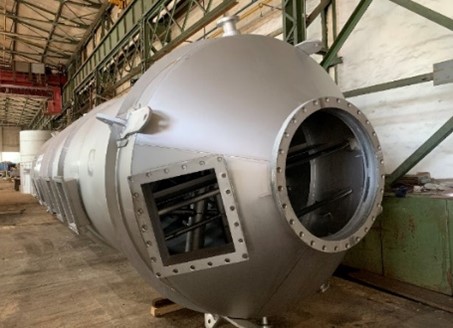TECO 2030 receives scrubber order from European shipowner for 2023 delivery
This is TECO 2030's first order for its modified scrubber system, which can remove nitrogen oxides, black carbon and particulate matter from ship exhaust, in addition to scrubbing away sulphur oxides.
 PHOTO: Scrubber tower. TECO 2030
PHOTO: Scrubber tower. TECO 2030
The company says the scrubber will be delivered to the ship in the first half of 2023, and that it will allow the vessel to reduce its emissions of sulphur oxides, nitrogen oxides, black carbon and particulate matter.
More than half of the around 4,800 ships that have scrubbers installed today installed them in 2019, which was right in the lead-up to the IMO’s 0.50% sulphur cap came into effect on 1 January 2020, according to DNV data.
Scrubber installations then slowed to just under 1,200 ships in 2020, and have since been around 200 ships/year.
The recent months' wide Hi5 spreads in Singapore and other major bunker ports has spurred renewed interest in the sulphur scrubbing devices, which allow ships to continue burning HSFO while complying with the IMO regulations.
Freightwaves reported on 5 December, based on Clarksons Securities data, that a 180,000-dwt Capesize bulker fitted with a scrubber saves around $9,400/day on fuel on the spot market compared to one without. A scrubber-equipped very-large crude carrier (VLCC) built in 2011 can save an even greater $14,100/day on fuel, it estimated.
“I am confident that this [sale] will spark the second wave for scrubbers as the fuel price gap is stabilising again after almost 3 years with a global pandemic and 3 years since the introduction of the global sulphur cap implemented by the IMO,” says TECO 2030 chief executive Tore Enger.
By Konica Bhatt
Please get in touch with comments or additional info to news@engine.online





